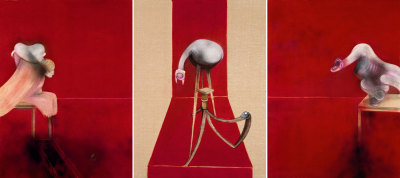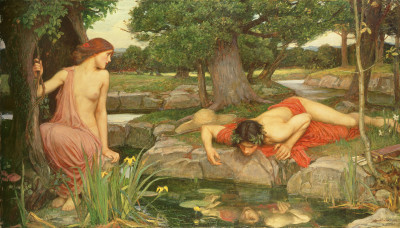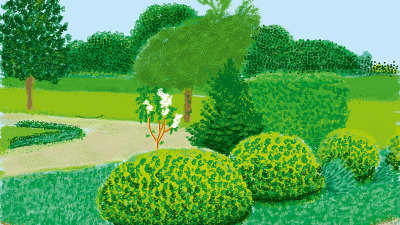Rubens and His Legacy: the story so far
Rubens and His Legacy: the story so far
By Tom Jeffreys
Published 9 October 2014
Our upcoming Rubens show is the first major exhibition to look at the Flemish master’s influence on four centuries of art history. We caught up with curator Arturo Galansino to learn about the genesis of the show.
-
“The opening of Rubens and His Legacy in January 2015 will be the culmination of a project that’s been a very long time in the making. The exhibition is a collaboration with Nico Van Hout, senior curator at the Royal Museum of Fine Arts, Antwerp. Nico’s a major Rubens specialist, and it was he who conceived the idea for this exhibition at the Royal Academy. The idea is to explore not only Rubens’ work itself, but also his continuing influence from the seventeenth century right up to Cézanne and the beginning of the twentieth century.
-

Peter Paul Rubens, The Triumph of Henri IV, 1630.
Oil on panel. 49.5 x 83.5 cm. Lent by The Metropolitan Museum of Art, Rogers Fund, 1942 (42.187). Photo © 2013. Image copyright The Metropolitan Museum of Art / Art Resource / Scala, Florence. Exhibition organised by the Royal Museum of Fine Arts, Antwerp, Royal Academy of Arts, London, and BOZAR (Centre for Fine Arts), Brussels.
-
“Rubens is a name that everybody knows. He’s known so much for his chubby nudes that he has his own adjective – Rubenesque. He’s far less well known for his influence, but he really was incredibly influential – in fact, perhaps one of the most influential artists of all time. His work spread all over the world: the exhibition even includes an 18th century porcelain dish inspired by a Rubens print, all the way from China.
"In his lifetime Rubens was the biggest artist in the world: his works were hugely in demand, with prints and reproductions spreading his fame further. He wasn’t just an artist, but also an intellectual, a collector and a diplomat – he worked for the Kings of England and Spain and the Queen of France. With his mixture of personal charm, connections and artistic skill, he was almost what you’d call a ‘VIP of his time’. To make a bit of an anachronistic comparison, he was rather like a Hollywood director today.
-

Peter Paul Rubens and Jan Brueghel the Elder, Pan and Syrinx, c.1617.
Oil on panel. 40 x 61 cm. Museumslandschaft Hessen Kassel, inv. GK 1229. Photo: Museumslandschaft Hessen Kassel, Gemäldegalerie Alte Meister/Ute Brunzel. Exhibition organised by the Royal Museum of Fine Arts, Antwerp, Royal Academy of Arts, London, and BOZAR (Centre for Fine Arts), Brussels.
-
“And he has continued to be influential. In France, Delacroix called Rubens “the Homer of painting”, and in England his work was a key part of the debates happening at the time the Royal Academy was formed. He was part of the training for an artist – one of the key names to study. There are works by lots of early Academicians in the show – Reynolds, Constable, Gainsborough and more.
"All of Rubens’ many styles have been hugely influential: his religious paintings, erotic scenes and mythology, landscapes, even his portraiture. Through the art of Van Dyck, the best of Rubens’s pupils, all the great names of British portraiture were influenced by Rubens. And let’s not forget violence! He was a great painter of hunting, battles and abduction scenes– it’s one of the most famous aspects of his work, and we dedicate a whole section of the exhibition to it.
"My personal favourite work is Tiger, Lion and Leopard Hunt – for me it’s the pinnacle of baroque style, full of fear and hate and energy. I went to see the work in the Museum of Rennes and was amazed by the characterisation he gives not only to the people but the animals too.
-

Peter Paul Rubens, Tiger, Lion and Leopard Hunt, c.1616.
Oil on canvas. 256 x 324.5 cm. Musée des Beaux-Arts de Rennes, inv. 1811.1.10. Photo © MBA, Rennes, Dist.RMN-Grand Palais / Adélaïde Beaudoin. Exhibition organised by the Royal Museum of Fine Arts, Antwerp, Royal Academy of Arts, London, and BOZAR (Centre for Fine Arts), Brussels.
-
“Our aim is to show that Rubens was not only the great rhetorical painter of the baroque - but also that he was much more than that. There is also irony in his work, a sense of fun, and curiosity too. All of these elements have had a lasting influence throughout the history of art. ‘Groundbreaking’ is a word that gets used a lot, but this exhibition really is – it’s never been done before.”
Rubens and His Legacy is in the Main Galleries at the RA 24 January – 10 April 2015.
Tom Jeffreys (@tomjeffreys) is a writer, editor and curator.
Arturo Galansino is co-curator of Rubens and His Legacy.






